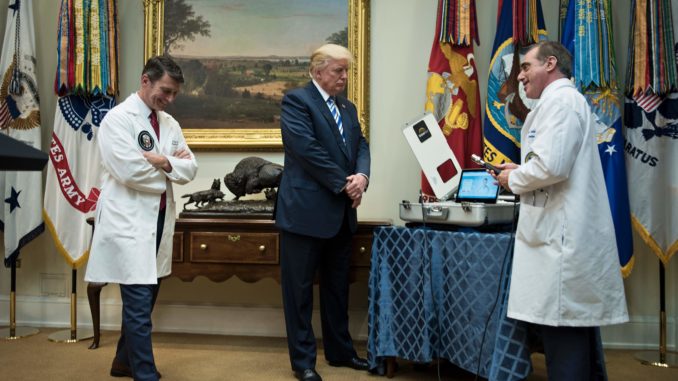
A baby born in the U.S. in 2004 will live an average of 77.9 years. That life expectancy ranks 42d in the world, down from 11th twenty years earlier.
– Source: Census Bureau and National Center for Health Statistics
BLAME-STORMING THE HEALTH CRISIS
Who is responsible for the health crisis in America? Is it the government? The state of the economy? Parents? Schools? What about you and me? Restaurants? Grocery stores? Or is it our busy schedules? How about those get-togethers and parties you attend? Maybe the presented food choices are to blame. Yes! “Blame.” That is the word I was looking for! We are looking for someone or some institution to blame for our health crisis.
IS THERE A GOVERNMENT CONSPIRACY?
Is there a government conspiracy? If so, just who are the conspirators? Let us get one thing straight. You and I do not need anyone’s help in creating a health crisis. There is a reason for this. You and I are the greatest conspirators of our own lives. We have received more than enough information to let us know what to do to enhance our health and yet we, in many cases, do not act and make the changes. I think that clarifies the conspiracy theory in a nutshell. When I speak of this health crisis, I am not talking about medical insurance or medical costs or treatment. True, this is an important issue. However, this issue only touches on the surface of the problem. How we think, eat and live is the real cause. So who or what is responsible? Do you have an idea? Who is the villain or culprit?
YOU ARE RESPONSIBLE FOR YOUR HEALTH
You are personally responsible for all the decisions you make. Do not blame any institution or anyone else for your poor choices that lead to disease, illness and poor health.
WHY AMERICANS RANK LOW ON LONGEVITY
What has caused America to fall so far behind the statistics on longevity in the world? The ranking went from 11th to 42d. Americans do live longer, but not as long as 41 other countries, according to National Center on Health Statistics. Why is one of the richest countries in the world not able to keep up with other countries? Some say it is because the United States has no universal health care. I do not see that as the primary reason since we have never had universal health care. Here is what I think are some of the primary reasons for this trend:
- Adults in the United States have one of the highest obesity rates in the world. One third of U.S. adults 20 years and older are obese and about two thirds are overweight, according to the National Center for Health Statistics.
- Americans are extremely sedentary in their lifestyles.
- Americans do not exercise at all or very little.
- Americans eat too much and they eat too much processed foods, sugar and fat.
- As long as the health care debate is limited to insurance, the health of Americans will not improve.
SAM MADE ME DO IT
Kids sometimes will do the craziest things. Once upon a time, there were two brothers. We will call them Sam and Jake. As school-aged brothers, Sam challenged Jake to climb a tree, and so he does. Then Jake is challenged, on a dare, to go farther out on a long, thin branch of the tree. He gets about half way out before the limb breaks, and he comes falling to the earth with a thump. Jake broke his nose and got some cuts and bruises. Both kids report to their mother and of course Mom asks Jake, “How did this happen?” Jake responds, “Sam made me do it!”
There are many complaints I hear about all that enticing processed food in the grocery stores. There are remarks about the special challenge of eating out: The portion sizes are too big, and there are all those irresistible, unhealthy “choices” available. I see no difference between Jake’s response and these complaining adults’ reactions to their plight – or, should I say, dilemma. Jake said, “Sam made me do it.” Translation: Sam is responsible for Jake’s poor decision to go out on a limb. That is nonsense. Jake is responsible for his own decision to go out on a limb. We adults are too frequently “going out on a limb” with our health by making poor choices while laying the blame on external circumstances or institutions — whether commercial, social, or governmental. Cease fire with such thoughts of blaming external circumstances or other people. Take charge. Be accountable for your own actions.
INSTITUTIONAL RESPONSIBILITY
Are our institutions off the hook when it becomes to responsibility? No, they are not. I use the term “institution” in a broad sense, to include the following:
- Federal, state and local governments
- Political parties and politicians
- Teachers and school boards
- Physicians, dentists, nurses
- Journalists, press and media
- CEO’s and corporate shareholders
- Restaurateurs, marketers
- School cafeterias
- Workplace cafeterias
- Clergy, little league coaches
- Parents and caregivers
- Law enforcement officers, parole officers
- Military leaders (from the squad leader upward)
INSTITUTIONS ARE RESPONSIBLE TO LEAD BY EXAMPLE
What kind of leadership responsibility do institutions have when it comes to healthy eating and exercise? Institutions, as well as all leaders, have a heightened level of responsibility beyond rules and regulations of the organization. Our institutions have the special responsibility to “walk the talk,” clarify the goals of health and fitness, and assume a more visionary role to set and implement standards for a solution to our health crisis. Our institutions are morally obligated to set the example by living by the higher standard required of them as leaders. This can be accomplished through legislation, executive orders and both internal and public policy making. Our institutions need to deal with the problem directly and use their special influence to save lives and prevent suffering.
HEALTH INSURANCE DOES NOT EQUATE TO A HEALTHY LIFESTYLE
Health insurance will not accomplish this. Are you looking for true medical insurance? Make your premium payments in the form of living a healthy lifestyle void of dependence on a home pharmacy of medications. Most of our medications are prescribed because of our lifestyles, not because we simply got sick. I am talking about the overwhelming rule and not the exception.
There are exceptional cases where, despite a healthy lifestyle, serious disease or illness happens. Would you cease to drive a car simply because someone had an automobile accident? In addition, you certainly should not cease to lead a healthy lifestyle just because someone you know lived to be 100 years old as a smoker. That would be a fatal error in thinking. It is just this type of thinking that is killing and maiming Americans. Ban this type of thinking from your mind.
Take the educational institutions for America’s young people. Schools are primarily focused on delivering on educating our youth with an approved curriculum. Schools need to go beyond mere curriculum, to consider the whole child, setting improved fitness and healthy eating as a priority. Fitness and healthy eating should be a part of the curriculum, as they play a major role in the development of a child.
TEACHERS ARE ROLE MODELS
Teachers are role models and leaders when it comes to eating and exercise habits and how they portray their attitudes about fitness and health in school. John Maxwell defines leadership as “influence – nothing more, nothing less.” Moving beyond the position of the teacher to assessing the ability of the teacher to influence others as a leader is essential. This refers to those who would consider themselves followers, and those outside that circle.
Leadership builds character, because without maintaining integrity and trustworthiness, the capability to positively influence will disappear. There are many other definitions of leadership. They all point to a leader having influence on others and providing to them the guidance and direction necessary to envision a long-term view of the future.
POINT OUR CHILDREN IN THE RIGHT DIRECTION
Policy is made from the top down through legislation, executive order, mission and policy statements. Where there is a void in such top-down leadership, the initiative must begin from the ground up. Educational institutions by virtue of their access to vast blocks of our children’s time, have a unique responsibility to go beyond mere curriculum to consider the whole child. By offering and stressing healthier choices, they are setting precedent for the rest of that child’s life.
Early in America’s pioneer history, schoolteachers were expected to be morally beyond reproach in every detail of their own lifestyle. This reflected how those communities wanted to influence their children’s future and the future of the country as a whole. Today’s America likewise needs today’s schoolteachers to be wholeheartedly health conscious for the same reason. Our future depends on it.
That is not to say that all schoolteachers should be fashion-model thin or good-looking or in any way shaped by the media’s image. An overweight teacher who is working to improve her fitness would be preferable over the Size 4 who is proud to eat candy bars and drink sodas in front of her pupils. Institutions are role models in all that they say and do or do not say or do. Their policies and actions set the standards.
WE ARE KILLING OUR CHILDREN
Look at some statistics on childhood obesity in America. About 15 percent of children and adolescents ages 6-19 years are seriously overweight. The percentage of children and adolescents who are defined as overweight has nearly tripled since the early 1970s.
- Over 10 percent of preschool children between ages of two and five are overweight.
- Another 15 percent of children and teens ages 6-19 are considered at risk of becoming overweight.
- Researchers found that lowered self-esteem was associated with being overweight in girls as young as five.
- One in five children in the U.S. is overweight.
- Children ages 10-13 who are obese are expected to have a 70% likelihood of suffering from obesity as adults.
Centers for Disease Control and Prevention’s (CDC), 1999-2000
National Health and Nutrition Examination Survey (NHANES)
CHILDHOOD OBESITY ONLY AN INDICATOR AND NOT THE REAL PROBLEM
Childhood obesity is only the indicator of an underlying problem of a sedentary lifestyle and unhealthy eating habits. Address these underlying issues, and childhood obesity will be significantly reduced.
SCHOOLS, TEACHERS AND PARENTS HAVE A HEIGHTENED LEVEL OF RESPONSIBILITY
Our schools, teachers and parents have a heightened level of leadership responsibility to address the statistics that are just a few of many indicators of the direction of the state of health of our children. Once these children become adults, they, too, will pass on their lifestyles to their children and will in all likelihood perpetuate poor eating and exercise habits. The consequences will manifest themselves as learning disabilities, increased crime, and socioeconomic problems which our children’s generation cannot afford to inherit.
THE MOTHER OF ALL INSTITUTIONAL EXCUSES
What is the number one excuse institutions use for not doing more to fight the poor state of health of Americans?
Answer: It is each individual’s own decision as to how he or she wants to live, how he or she wants to eat and exercise or not. This is the mother of all institutional excuses. An institution using this excuse relinquishes its leadership responsibility as a visionary to lead and guide by example and exercise that institutional influence it possesses. The institutions need to ask the visionary question of what can they do to influence, guide and inspire each individual to make healthy lifestyle choices.
WHY PYRAMIDS AND DIETARY GUIDELINES DON’T WORK
Dietary guidelines, pyramids and charts have all failed to make Americans healthier. Why are they not working? Institutions are made up of individuals who are a cross-section of society who are therefore personally dealing with the same lifestyle issues about eating and exercise, as are all consumers.
Dietary guidelines do not work, because the vast majority of the food and beverage industry does not incorporate them into food choices and portion sizes we see on the shelves. Remember, this is from the perspective of the institution and its responsibility and in no way diminishes the personal responsibility of every individual to take charge of their own lifestyle and choices. Our children need special guidance to learn what personal responsibility means. That guidance must come from adults.
GOVERNMENT SETS THE STANDARD AS A LEADER
Emission controls in the automobile industry have resulted in smaller, cleaner, and more fuel-efficient cars; though more work remains to be done. These successes were accomplished through government regulation through the Clean Air Act and similar initiatives. We have another just as pressing form of pollution going on in America: health pollution.
HEALTH POLLUTION
We have a health pollution crisis on our hands in America, and – as with automobile emission regulations – the food and beverage industry needs to be regulated to meet improved standards for healthy eating through strict labeling, reduced portion sizes, and regulation and disclosure of unhealthy ingredients in our country’s food supply.
The free market society needs some governmental fine-tuning in order to save American lives and prevent suffering. The cost of not doing so is enormous. Heart disease, cancer, stroke, and diabetes (the four leading causes of death in the U.S.), and obesity, hypertension, and osteoporosis are all linked to diet and exercise. Americans and their children are the most over-fed and under-nourished group of people in the world.
One out of two Americans is overweight. One-third of Americans are obese. Being overweight is the second leading cause of preventable death in the U.S.
ILLNESS AND DISEASE IS COSTING AMERICA BIG BUCKS
- The total cost of stroke to the United States is estimated at about $43 billion per year.
- $28 billion per year direct costs for medical care and therapy.
- $15,000 is the average cost of care for a patient for up to 90 days after a stroke.
- $35,000 for 10% of patients, the cost of care for the first 90 days after a stroke.
*Statistics compiled from the Pennsylvania Health Care Cost Containment Council “Hospital Performance Report: 28 Common Medical Procedures and Treatments” (December 2002)
FOOD AND BEVERAGE INDUSTRY
The food and beverage industry as well as the health and wellness industry have a leadership responsibility to clean up their marketing. Misinformation and misleading claims are rampant. Observe carefully and you will detect the emotion-laden words, which are associated with poor choices and portion sizes:
- Convenient (over-processed)
- All natural (so is lard and corn syrup)
- Lite or light (lots of added sugar)
- Quick and easy (huge amounts of sodium)
- Simple (check the label; not so simple, unpronounceable ingredients.)
In addition, the list goes on:
Fun, exciting, easy, time saver, feels great, low-carb, no sugar, no fat, healthy, look great.
Will the food and beverage industry have an economic price to pay for such changes? Yes, the transitional period will have some associated costs, in the short term. In the end, the food and beverage industry as well as consumers and our country as a whole will all benefit from a healthier America with healthier food choices. In fact, this will result in innovation and new areas of revenue for the food and beverage industry, all while actively contributing to making Americans and America healthier and stronger.
THE PUBLIC’S BASIC RIGHT TO KNOW
Disclosure is the law for government in Florida and many other states and federal entities. The Sunshine Law of Florida establishes a basic right of access to most meetings of boards, commissions and other governing bodies of state and local governmental agencies or authorities. It has led to not only a more informed public, but also actually better government.
Full disclosure on food labels would likewise inform the public and result in healthier foods being produced and marketed. True full disclosure for the average consumer must be in the form of a simple “level of healthiness” and “level of nutrients” grade. The factors determining the simple, easy-to-understand grade must be clearly defined in easily understandable language.
HEALTH POLLUTION A NATIONAL SECURITY ISSUE
The present health pollution of America is a national security issue because the consequences go much farther into sociological issues, such as increased crime and poor learning ability. An unhealthy America cannot perform or think as well.
LOOKING FORWARD
Whatever challenges our country faces will be better met if we are healthier in mind and body. Sick and unhealthy Americans are living longer and living with meds. These Americans need to be weaned back to health and off the meds, where possible. In most cases, lifestyle changes will result in improved health, independent of meals. Our physicians are challenged with a special institutional leadership role in strategizing to prescribe lifestyle-based changes and not just medication so that they and not just medication so that they truly can take on the role of healers, not only for the patient but also for the nation. Keep America strong. The medication mindset without healthy eating and exercise is killing Americans.
We have what it takes to change our culture for the betterment of all by taking personal responsibility for our lifestyles we lead. Our institutions have an equally important role model responsibility to set the tone and standard necessary to keep America healthy. Regardless of political affiliation, there should be complete agreement about personal and institutional responsibilities.
Unless otherwise stated, PONIREVO and/or its licensors DO NOT own any intellectual property rights in the website and material on the website. Majority of the site’s content has been scraped and auto posted by a third party artificial intelligence program —– PONIREVO Creation Team.
Proudly WWW.PONIREVO.COM



